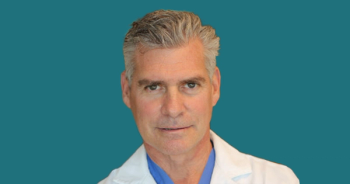
Otoferlin-Related Hearing Loss Gene Therapy May Open the Door to Gene Therapies for Other Types of Hearing Loss
Lawrence R. Lustig, MD, discussed promising early results from the phase 1/2 CHORD trial evaluating Decibel Therapeutics and Regenerons’ DB-OTO.
Decibel Therapeutics and Regeneron are currently evaluating an adeno-associated virus (AAV) vector-based gene therapy, referred to as DB-OTO, for the treatment of otoferlin (OTOF) gene-related hearing loss in the first-in-human phase 1/2 CHORD clinical trial (NCT05788536).1 Data from the first 2 patients in the trial were recently presented by Lawrence R. Lustig, MD, the chair of the Department of Otolaryngology—Head and Neck Surgery at Columbia University College of Physicians, at
Following his presentation, CGTLive® sat down with Lustig to learn more about the implications of the promising early findings. Lustig emphasized that these positive results may encourage more innovation in the field and eventually lead to more genetic testing in children with hearing loss and potentially spur on the development of gene therapies for other forms of genetic deafness.
CGTLive: Can you give some background context about the data you presented at ASGCT’s 2024 Meeting?
Lawrence R. Lustig, MD: We presented the initial data on 2 patients who underwent cochlear gene therapy for OTOF-related deafness aspart of the CHORD DB-OTO trial.
What were the main results you presented?
One patient was dosed with this particular form of gene therapy at age 10 months and the second patient at almost 4 years of age. First of all, we had very few adverse outcomes and they were mostly minor and not related to the gene therapy itself. We had no problems with balance or any other problems in the kids. When we look at hearing outcomes in the first child who was dosed at 10 months of age, at about 6 months posttreatment the auditory thresholds were essentially normal in the key speech frequencies, or otherwise normal to mild. In the 4-year-old child who was dosed, we only have data out to 6 weeks, but the hearing improvement that we're seeing is essentially on track to what we saw in the younger child who had much better hearing improvement and so we expect that that hearing will continue to get better as we continue to follow the child.
What would you say are the main takeaways from the data presented for the healthcare community?
First of all, this is the first treatment for genetic deafness that's become available. It's exciting because the hearing results, at least in this small cohort, are much more exciting than we ever could have predicted. We're not of course the only group doing this; there are other groups that are also presenting using the same gene. But universally everybody seems to be getting similar hearing improvement. This is going to be big for the field. Now that we have a treatment for genetic deafness, our hope is that this will spur universal genetic testing in all kids with hearing loss, which will give us a much better overview of the genetic landscape of hearing loss in the world. Right now, we know there's a few genes that when they're mutated will lead to deafness, but there's many others for which it's not so clear. So really identifying what genes are exactly involved in hearing loss and in what combinations is really going to help revolutionize our field. We also think that because this is the first successful treatment for genetic deafness, this is going to spark innovation in the field and drive a lot of other groups to develop therapies for other forms of genetic deafness, as well.
Were there any challenges in the research for DB-OTO that you can discuss?
One of the big challenges that we initially encountered in this was that the vector that we typically use to get the DNA into the into the cells, AAV, is limited in the size of the DNA that you can put in there. As such, we couldn't use a traditional methodology for this. What we ended up doing was using a method called a dual vector approach, where you basically take the gene, split it in half, put each half in a separate viral vector, and then when those viruses cotransfect the cell through some genetic magic, they come together, and you end up with a full length messenger RNA, which makes the natural protein.
Is there anything else you would like to share?
Well, I think the most important message is, first of all, if you have a child with deafness get them genetically tested because even though this is a rare cause of deafness, that child may have it. Furthermore, even if the child is not a candidate for this study, it's very likely that in the future that there may be a form of treatment for that particular form of deafness. The other thing is to get kids in early. The earlier you can get any kind of treatment—whether it's hearing aids, cochlear implants, or this type of therapy—the earlier you can intervene, usually the better the outcomes.
This transcript has been edited for clarity.
REFERENCES
1. Decibel therapeutics receives FDA clearance of IND application for DB-OTO, a gene therapy product candidate designed to provide hearing to individuals with otoferlin-related hearing loss. News release. Decibel Therapeutics. October 17, 2022.
https://ir.decibeltx.com/news-releases/news-release-details/decibel-therapeutics-receives-fda-clearance-ind-application-db
2. Lustig L, Bance M, Ishiyama A, et al. Intracochlear administration of DB-OTO gene therapy in pediatric patients with profound hearing loss due to otoferlin mutations: the CHORD phase 1/2 open-label trial. Presented at: ASGCT Annual Meeting 2024, May 7-10; Baltimore, Maryland. Abstract #10.
Newsletter
Stay at the forefront of cutting-edge science with CGT—your direct line to expert insights, breakthrough data, and real-time coverage of the latest advancements in cell and gene therapy.











































